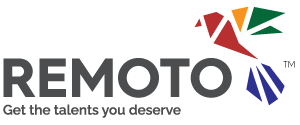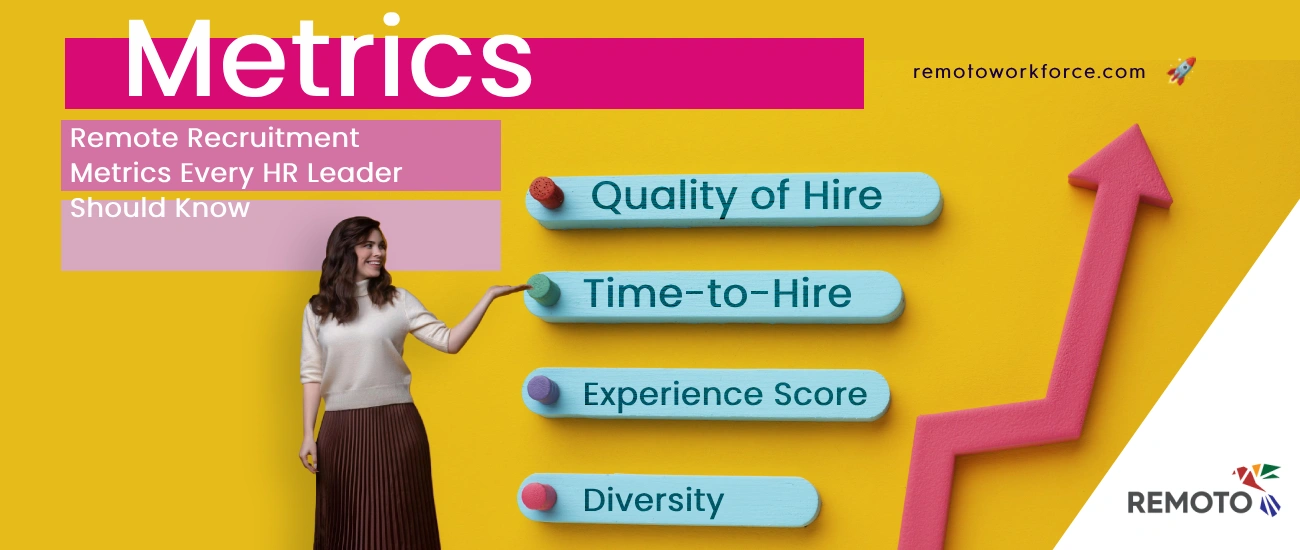Remote recruitment has transformed the way companies hire, providing access to talent from around the globe. However, this shift brings challenges in managing and optimizing the hiring process from a distance.
In a world where first impressions matter, recruitment metrics serve as your guide. They help you identify the most efficient, cost-effective, and employee-friendly strategies.
This blog post will highlight the key metrics that every HR leader should understand to refine their remote hiring process.
Time is Talent: Tracking Time-Based Metrics
When it comes to recruitment, time truly is money and talent. Delays in hiring can cost your company productivity and might even scare away the best candidates. Time-based metrics help you stay ahead of the curve.
Time to Fill
This metric measures the time between posting a job and closing it with an accepted offer. It’s the ultimate indicator of how well your hiring process flows. A drawn-out timeline can reveal bottlenecks, whether it’s in sourcing, screening, or decision-making.
To improve this metric, start by analyzing your recruitment stages. Are there too many touchpoints? Are approvals taking forever? Streamline processes and introduce automation tools where possible. For example, AI-driven applicant tracking systems can save days—or even weeks.
Time to Hire
Unlike time to fill, this metric zeroes in on the candidate’s journey, measuring the time between application and offer acceptance. This is a key factor in candidate satisfaction. In the digital age, top talent doesn’t wait. If your process drags, they’ll accept an offer elsewhere.
To shorten hiring time, ensure your recruitment team is aligned with hiring managers. Clear communication and faster interview scheduling can work wonders. Also, maintain a talent pipeline so you’re not starting from scratch with every vacancy.
The Dollars Behind the Decisions: Cost-Based Metrics
Hiring remotely offers initial cost savings, but it’s essential to track and manage recruitment expenses effectively.
Cost Per Hire
This metric sums up all expenses: Job ads, assessments, and recruiter salaries, divided by the number of hires. It offers a clear picture of how much you’re investing in each hire.
If your cost per hire feels too high, analyze where the money is going. Are you overspending on low-performing sourcing channels? A robust sourcing strategy that leans on high-yield platforms like LinkedIn or referral programs can drastically reduce costs.
Revenue Per Employee
This is a financial performance metric that calculates how much revenue each employee generates. It’s an indirect yet powerful recruitment metric. A high revenue per employee indicates that you’re bringing in talent capable of delivering results.
To improve revenue per employee, align hiring strategies with your business goals. Focus on recruiting high-performers who thrive in remote environments.
The People Equation: Candidate Quality and Retention Metrics
Hiring is always related to finding the right fit. Metrics like quality of hire and retention rates provide the insights you need to secure top-tier talent that sticks around.
Quality of Hire
This metric evaluates how well new hires perform in their roles and how they align with your company culture. It’s not just about skills; it’s about value. A high-quality hire contributes positively, while a bad hire costs time, money, and morale.
Track performance reviews, manager feedback, and retention rates to calculate this metric. Pro tip: Use structured interviews and skill assessments tailored to remote roles. These tools help weed out candidates who may not thrive in a virtual environment.
First-Year Attrition
Early turnover is the nightmare of every HR leader. It’s a clear sign that something is amiss, whether in the recruitment process or onboarding. High attrition rates in the first year can signal mismatched expectations or inadequate role preparation.
To reduce first-year attrition, revisit your job descriptions. Are they crystal clear about responsibilities and expectations? Improve onboarding by offering remote-friendly tools and mentorship programs. Building connections early can make new hires feel part of the team—even from miles away.
Beyond the Numbers: Candidate Experience Metrics
In remote hiring, where face-to-face interactions are uncommon, the candidate experience becomes a top priority. Metrics in this category ensure your hiring process leaves a positive impression.
Application Completion Rate
This metric measures how many candidates complete your application process versus those who start but abandon it midway. If your completion rate is low, it’s a red flag that your application process might be too complicated or time-consuming.
Simplify your application forms and eliminate unnecessary steps. For example, instead of requiring candidates to create new accounts, allow for seamless integration with LinkedIn profiles.
Offer Acceptance Rate
A low acceptance rate is a tough pill to swallow. You’ve spent time and resources courting a candidate, only for them to turn down your offer. This metric can reveal issues with compensation, role clarity, or even your employer branding.
Survey candidates to understand their concerns. If compensation is the issue, use benchmarking tools to ensure your offers are competitive. And don’t underestimate the power of transparency—clearly communicate job expectations and company values.
Candidate Net Promoter Score (cNPS)
This measures how likely candidates are to recommend your company to others. A poor cNPS indicates problems in your process, from lack of updates to unclear feedback.
To boost cNPS, keep candidates informed at every stage. Even rejections can be a positive experience if handled professionally and empathetically.
Takeaway
Getting to know and improve your hiring metrics isn’t just about filling jobs. It’s about making your hiring process smarter and more efficient so it benefits your whole company. By focusing on time, cost, quality, and experience, HR leaders can create a seamless recruitment journey that attracts top talent and aligns with strategic goals.
Remember, the best recruitment strategies are those that balance data with empathy. Use these metrics not just to track performance but to craft an inclusive, positive hiring experience—one that resonates with candidates and stakeholders alike.














